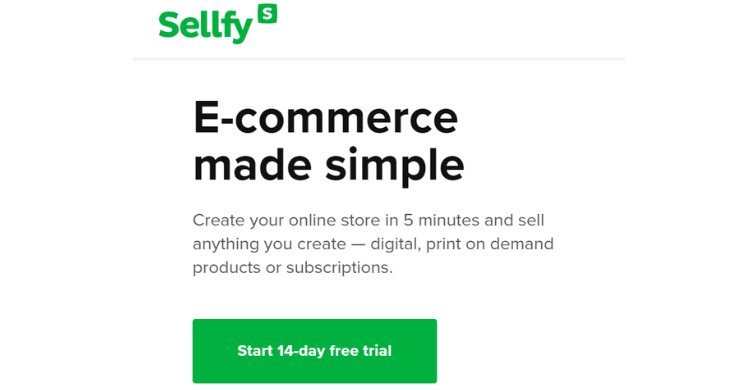Dropshipping
Dropshipping is an eCommerce method where a business owner, known as a ‘dropshipper’, primarily focuses on marketing and managing an online store to sell products from third-party suppliers, who could be manufacturers, wholesalers, or retailers. The supplier takes care of inventory and shipping while the dropshipper focuses on the business aspects.
Here is a general outline of how dropshipping functions:
- When a customer purchases a product from a dropshipper, they will pay the online store’s retail price.
- The dropshipper will forward the order to the supplier. Depending on the agreement, the dropshipper pays the wholesale price to the supplier and keeps the profit margin. For example, if the customer pays $100 for a product and the wholesale price is $70, then the dropshipper will keep the $30.
- The supplier processes the order and ships the product directly to the customer.
If customers encounter product delivery or quality problems, they can reach out to the dropshipper, who will then relay the issues to the supplier.
How to start a dropshipping business
1. Choose a dropshipping business niche
Due to the high competition in this industry, with approximately 30% of online stores utilizing dropshipping, it is essential to distinguish your brand as many dropshipping sites offer identical products but with different branding.
One way to accomplish this is by selecting a niche, which typically refers to a particular group of customers that a business should concentrate on. For instance, Meowingtons is a dropshipping store that specializes in selling products designed for cat owners.
To ensure a successful online business, it is important to consider the following steps when selecting a niche:
- Start with yourself. What are you most interested or knowledgeable in? The more you understand your niche, the easier it will be to figure out what works for your audience.
- Look at trends. To ensure profitability, consider selling products in high demand – regardless of the season. Check out our list of trending products for inspiration. Tools like Google Trends and Trendhunter are also great for locating them.
- Check out the best-selling products on Amazon. To ensure that a niche has stable or growing sales, it’s useful to review its sales history on Amazon, which is the largest online marketplace. AMZScout’s tools can help you identify trending products that are suitable for reselling.
To proceed systematically, conduct market research to evaluate the industry after compiling a list of various potential niches.
By thinking methodically, you can uncover the potential projections, opportunities, and threats that could have a long-term impact on you. It will become simpler to estimate revenues and develop marketing strategies for your business by doing so. Take a closer look at the following components:
- Industry value and market size. Gather information on the market niche’s size, trends, and growth rate. This data shows if there are enough customers interested in the products you’re looking to sell. Tools like Semrush can help with this process.
- Target audience. Consider the niche’s demographics, such as the age range, gender, income level, hobbies, and occupation. This information will help with the next step – branding.
- Customer buying behavior. Understanding what drives buyers to purchase and how often they do so helps determine your marketing and pricing strategy.
- Main competitors. Use tools like Similarweb to find brands dominating the industry. Analyze their strengths and weaknesses, and identify market gaps your business can cover.
After selecting a niche and a range of products to sell, proceed to the subsequent step.
2. Source products
Before developing a website, it is important to research products to ensure that your business concept aligns with the needs of your target demographic. It is essential to search for multiple distributors who offer the same products in order to find the most competitive wholesale price. Some of the well-known marketplaces include:
- AliExpress
- SaleHoo
- Worldwide Brands
- Doba
- Megagoods
- Wholesale Central
You may want to consider looking into print-on-demand apparel, home goods, or books. Companies that specialize in print-on-demand apparel can print your custom design onto different clothing brands and styles, such as T-shirts, socks, and jackets.
First, select a product that ignites your enthusiasm and has a favorable profit margin. Additionally, ensure that the product presents well in the images displayed on the website. Many suppliers also offer statistics on popular items, enabling you to make informed choices and opt for products that are more likely to sell due to existing market demand.
3. Select suppliers
When you have identified the products you wish to provide, the next step is to select a supplier who will be responsible for shipping the products to your customers. It is important to consider certain factors when choosing the supplier:
- Quality: Choose a supplier that offers the quality you want your company to represent. One business model is to charge more for better quality products. This is in contrast to being a discount provider of goods that might not be the best quality. How do you want to position yourself?
- Profitability: You should be able to make a reasonable profit on the product. Consider shipping and transaction costs in your calculation. Most dropshippers look to get 15% to 20% in profit margins. Of course, if you can generate higher profit margins, that’s great.
- Reliability: You want to choose a supplier that sends products in a timely fashion with reasonable shipping expenses and times. Many suppliers are overseas, and you’ll have to determine whether or not you want your customers waiting for products. You also need to have a supplier that keeps a product in stock since it is frustrating for you and your customer to have an order that can’t be filled. The best way to check for reliability is to order a few products from the supplier and note the process.
- Return policy: When possible, find a supplier that offers a return policy. Many don’t, so you need to check on this before making any final decisions. You need to think about how you state your own return policies based on what the supplier offers.
The reason why most dropshippers prefer online marketplaces is because they typically offer a wider range of products and more dependable suppliers. However, if you have a particular product in mind, it is feasible to find a direct source supplier. This necessitates additional effort to identify the distributor working with the manufacturer, and often entails meeting a minimum monthly sales requirement to become eligible.
4. Build an online store
In order to sell your products, it is necessary for you to construct an e-commerce store. This e-commerce store functions as a website that facilitates the attractive display of your products for sale and includes the required shopping carts to facilitate purchase transactions.
For a newbie, the process of building a store can be challenging due to the presence of various components. To create a website, certain elements are required:
- A content management system – (CMS), such as WordPress, Shopify or Squarespace
- A domain name
- Web hosting (if using WordPress)
- Integrations with your chosen dropshippers
- A built-in payment gateway to accept online payments
The sale of the product is automated with the order to the supplier by the top e-commerce websites.
If this process is not automated, you will have to manually enter orders on a daily basis, which can be difficult and result in mistakes. Shopify is a popular option for individuals creating a dropshipping business. Nevertheless, there are other e-commerce platforms worth exploring to find the best fit.
If you can handle multiple selling channels, it is generally recommended to consider selling your products on platforms like Etsy, Amazon, or social media (e.g., Facebook or Instagram). Doing so helps increase your business’s visibility and boosts sales.
5. Register your business
In order to establish the company as a business and distinguish it from your personal assets, you must undertake the following steps sequentially: devise a name (typically the domain name selected) and file for an LLC or corporation with the secretary of state.
After successfully submitting your online application, you will receive a tax identification number (TIN) from the IRS. This TIN can be used to open a bank account that is connected to your payment gateway. The purpose of this bank account is to receive all deposits and cover the company’s expenses, which include web hosting and maintenance. Additionally, this account will be responsible for making payments to the supplier when a product is ordered.
To proceed systematically, it is essential to obtain a sales tax ID or reseller’s permit from the state tax office. The majority of states have a sales tax obligation on the items you sell, hence it is important to comply. Additionally, if you sell your products in different states, it may be necessary to remit sales taxes to those specific states as well.
6. Market your business
Setting up a website alone will not lead to thousands of people finding it. It is crucial to market the new business, especially since it operates online, requiring more than just word-of-mouth marketing typically used for local businesses.
To successfully engage in social media for your business, begin by joining relevant groups and actively contribute in a helpful manner rather than solely focusing on selling. Offer assistance to people who have queries and strive to establish yourself as a knowledgeable member of the community.
Your business can be discovered by people through this method. Ensuring you have dedicated business pages on platforms such as Facebook, Instagram, TikTok, and other social media sites is crucial. Regularly posting about new products, sales, or tips and tricks related to your industry will keep your audience engaged.
In addition to your social media endeavors, it might be beneficial to consider allocating funds towards advertisements and sales. By focusing on targeted demographics, you have the opportunity to launch Facebook Ads even with limited budgets. Contemplate initiating an advertising campaign with a daily budget of $10 to boost traffic towards your online store.
The key to converting potential buyers into customers for new e-commerce stores is to implement a variety of marketing strategies, including writing a blog that utilizes search engine optimization (SEO) tactics. This combination will help consumers easily find and engage with your store.
Why start a dropshipping business
For first-time entrepreneurs, dropshipping is a great option due to the following advantages it offers.
- Low startup costs and minimal supply chain management. Dropshipping eliminates the need to pay upfront inventory investments and take care of the business logistics. You can start selling without having to manufacture or store your own products.
- Low-risk business model. Add as many products as possible without worrying about production or inventory costs. If an item is performing poorly, dropshippers can easily switch it for another one to sell.
- Flexible location. Since there is no need to oversee the production process, it’s possible to run your business from anywhere with an internet connection. However, dropshippers need to maintain communication with suppliers and customers.
- More scalability. Since the suppliers will handle the shipping, you can worry less about receiving more orders when your business has grown.
Before launching a dropshipping business, it is important to consider the following factors in a step-by-step manner.
- Less control. Dropshippers rely heavily on suppliers to create, package, and deliver high-quality products. If there are issues like product mishandling, lousy packaging, or delayed delivery, you will not be able to address them directly.
- Sudden stock shortages. At times, suppliers may not warn you in advance if products go out of stock. It’s important to regularly check in with them to prevent listing unavailable products in your store.







